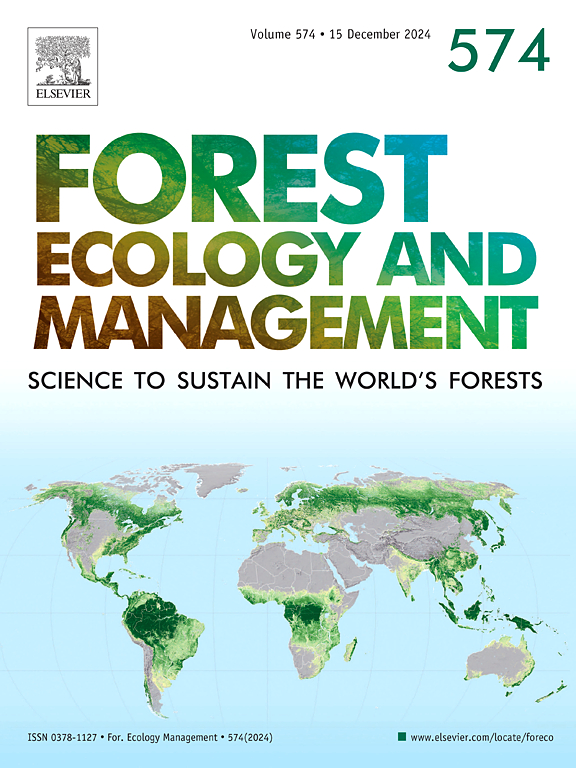The irregular shelterwood silviculture system and managing for stand complexity from a North American perspective
IF 3.7
2区 农林科学
Q1 FORESTRY
引用次数: 0
Abstract
Structurally and compositionally, diverse forests are associated with increased resilience and provision of desirable ecosystem services. Such forests can be created and maintained by silvicultural systems that foster natural regeneration, emulate natural disturbances, and promote the development of old growth features. Irregular shelterwood is increasingly applied to fill this niche. However, the implied meanings of both “stand irregularity” and the “irregular shelterwood system” are varied across sources, resulting in inconsistent application in forestry research. We revisited definitions of the term “irregular shelterwood,” reviewed studies of its applications, and examined it in the broader context of natural disturbance ecology and forest complexity, with a focus on the North American silvicultural perspective. We found two irregular shelterwood approaches – group-based and two-aged – that share conventional shelterwood traits. Both approaches produce multiage stands. We also found approaches to irregular shelterwood that resemble types of selection or that are non-systematic. Inconsistent terminology and naming conventions were evident across all approaches. These variable and contrasting portrayals inhibit the synthesis of study results by researchers and forestry practitioners. To clarify these ambiguities, we identified the features that best characterize the different types of partial cuttings reflected in the irregular shelterwood literature.
求助全文
约1分钟内获得全文
求助全文
来源期刊

Forest Ecology and Management
农林科学-林学
CiteScore
7.50
自引率
10.80%
发文量
665
审稿时长
39 days
期刊介绍:
Forest Ecology and Management publishes scientific articles linking forest ecology with forest management, focusing on the application of biological, ecological and social knowledge to the management and conservation of plantations and natural forests. The scope of the journal includes all forest ecosystems of the world.
A peer-review process ensures the quality and international interest of the manuscripts accepted for publication. The journal encourages communication between scientists in disparate fields who share a common interest in ecology and forest management, bridging the gap between research workers and forest managers.
We encourage submission of papers that will have the strongest interest and value to the Journal''s international readership. Some key features of papers with strong interest include:
1. Clear connections between the ecology and management of forests;
2. Novel ideas or approaches to important challenges in forest ecology and management;
3. Studies that address a population of interest beyond the scale of single research sites, Three key points in the design of forest experiments, Forest Ecology and Management 255 (2008) 2022-2023);
4. Review Articles on timely, important topics. Authors are welcome to contact one of the editors to discuss the suitability of a potential review manuscript.
The Journal encourages proposals for special issues examining important areas of forest ecology and management. Potential guest editors should contact any of the Editors to begin discussions about topics, potential papers, and other details.
 求助内容:
求助内容: 应助结果提醒方式:
应助结果提醒方式:


